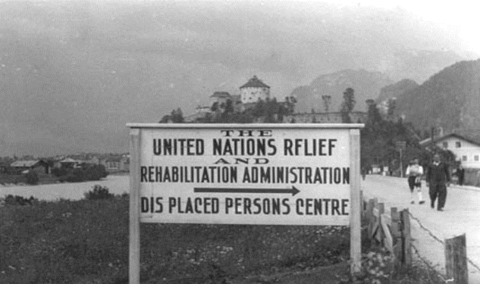Helping the children from the Lebensborn programme was especially challenging and, in most cases, unsuccessful. In August 1945, UNRRA developed a plan “to canvass all institutions and agencies caring for children, focusing on child welfare agencies, such as the Jugendamt (Youth Welfare Office); foster home placement agencies; kindergartens, and nurseries; as well as churches and schools. Each child would be screened and all information regarding the child’s background would be recorded, as well as an assessment of the quality of care the child was receiving, and from there make a decision as to if the child would remain or be taken to one of the children’s camps in Germany….Children’s information was registered with the tracing arm of the UNRRA and from there the administration checked their records to see if anyone, usually a family member, had submitted a request for the child.”
The agency ran out of funds and, in 1947, a successor organization, the International Refugee Organization (IRO), continued its work.
Read more about it in an interview with Gita Sereny who, at 23, worked as a child welfare officer with UNRRA or listen to her audio interview testimony.
Image and text sources
- https://www.crommelin.org/history/Biographies/1914Edward/UnrraScrapbook/index.html
- https://encyclopedia.ushmm.org/content/en/article/united-nations-relief-and-rehabilitation-administration
- https://search.archives.un.org/united-nations-relief-and-rehabilitation-administration-unrra-1943–1946
- https://history.barnard.edu/sites/default/files/inline-files/They%20Must%20Be%20Germans_Willa%20Smith_Thesis%20Spring%202020.pdf

